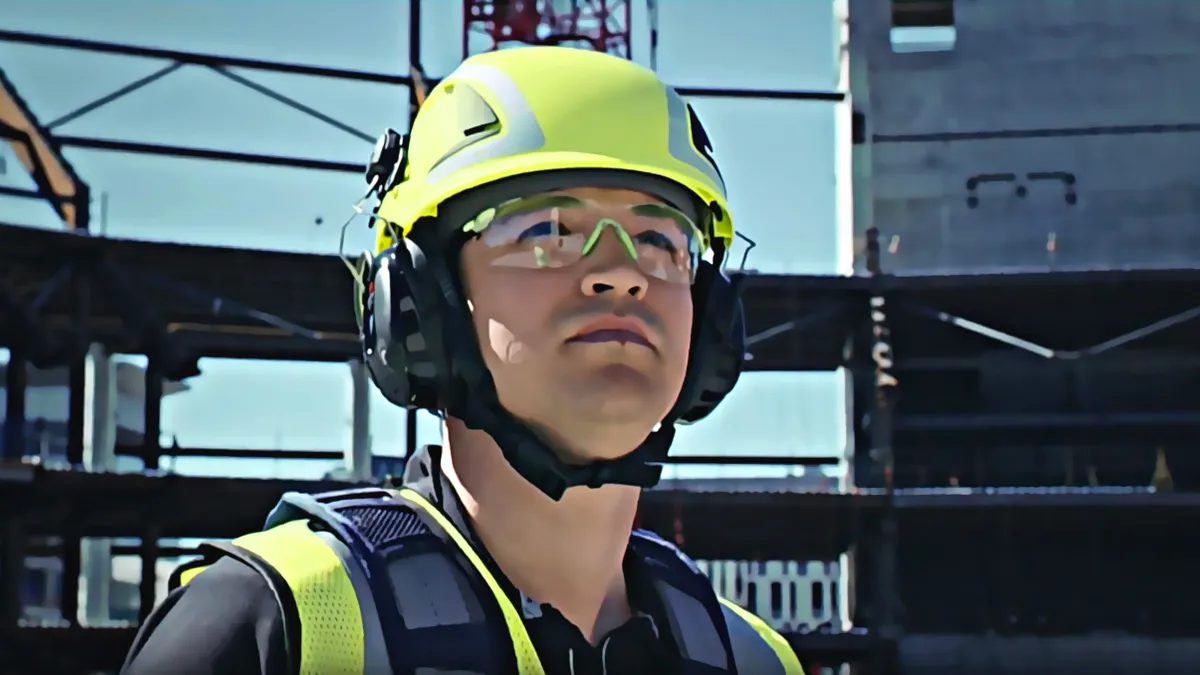The image of a construction worker wearing a hard hat is iconic. Whether it's high atop a skyscraper or on the ground, everyone on a job site must wear a hard hat, visitors included. However, is that mainstay of construction—the hard hat—getting a makeover? Nowadays, hard hats are often upgraded to safety helmets, because they offer increased protection. Will safety helmets eventually take over as the head protection of choice, or will hard hats and safety helmets coexist on the job?
Safety Helmet Shift
When picturing a safety helmet, think rescue workers or outdoor sports, like rock climbing, skiing, cycling and even kayaking. These helmets typically attach more closely to the head with built-in chin straps and have little to no brim around the edge. Their overall profile on the head is smaller.
Safety helmets have more safety elements, which is why they are preferred by athletes in dangerous sports and rescue workers in hazardous situations. Inside the helmet, there is protective padding and chin straps that keep the helmet securely on the head.
Helmets Are Construction-Tough
For construction workers, safety helmets not only shield against falling objects but certain models (Type II) can offer increased protection from impacts to the side and back of the head.
Type II helmets and hard hats are designed to minimize lateral impacts to the head, either from off-center, from the side or to the top of the head. For example, a blow to the head resulting from the sharp end of a side beam or I-beam.
In addition, chinstraps can provide increased safety during falls, trips and slips by keeping helmets or hard hats in place.
Safety Helmet Options and Accessories
Other attributes that make safety helmets safe include attachable visors, ear protection and being equipped with or constructed from Hi Viz materials.
OSHA regulations require the use of American National Standards Institute (ANSI) compliant head protection (ANSI Z89.1-2014). According to OSHA rule 29 C.F.R. 1926.100, employers must provide head protection equipment that meets or exceeds the industry consensus standard ANSI Z89.1.
Type and Class
All head protection is assigned a "Type" and a "Class." The type refers to the level of protection from an impact, while the class refers to the different levels of protection from electricity.
-
ANSI Type I Helmets are designed to reduce force as a result of impact to the top of the head
-
ANSI Type II Helmets are designed to reduce force as a result of impact to the sides or top of the head
The three classes of head protection include:
-
Class E (electrical) provides protection to withstand 20,000 volts
-
Class G (general) provides protection to withstand 2,200 volts
-
Class C (conductive) does not provide protection from electricity
A Type 1, Class C hard hat would be the standard worn by a construction worker not exposed to electrical hazards; a standard safety helmet would be categorized as Class C.
Pros and Cons of Safety Helmets

Barriers to Safety Helmet Domination
Another challenge to embracing safety helmets on the job is worker preference. Hard hats are a longstanding symbol of the construction worker. Not only does the safety helmet have a different look than the traditional hard hat, but it also has a different feel. Some workers may feel uncomfortable wearing the sleeker design of the safety helmet. This may make the cultural shift difficult for some workers.
Some workers may switch to safety helmets while others continue to wear hard hats depending upon the type of work they are doing. Safety helmets could be required when working at heights or in situations where there is a higher risk of falling – while hard hats could be worn by workers at ground level, such as concrete finishers, flaggers, electricians, drivers, etc.
Final Thoughts
The implementation of more and more safety helmets means added benefits for workers, construction companies and insurance carriers. Increased use of safety helmets means companies may have fewer workers out due to injury, fewer workers' compensation payouts and fewer claims. Construction companies may have to spend a little more money upfront, but the return in worker safety is invaluable. The transition from hard hat to safety helmet may take some time, but the safety and long-term cost benefits will likely make helmets the best choice for some.






